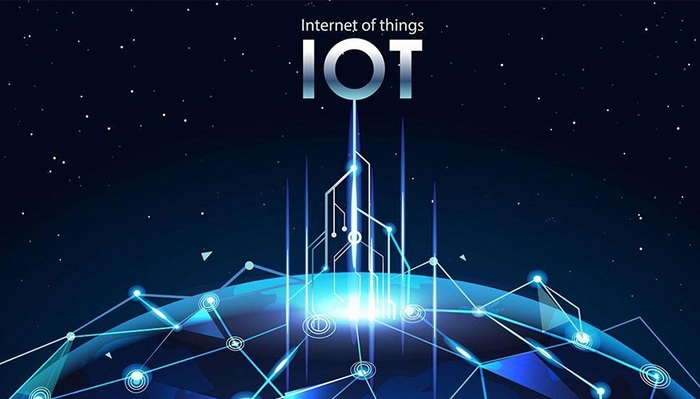Over the past 10 years, IoT technology has become more cost-effective. The devices themselves are becoming cheaper, more energy efficient, smaller, and increasingly smarter to fill specific roles within the IoT architecture to create new business outcomes. Over the next 20 years, it is expected that as many as one trillion devices will be connected to the Internet. The greater the number of connected devices, the more opportunities we have to discover and implement business improvements through IoT.


Now that the required technology is nearing maturity, functional IoT implementations are gradually increasing. A wave of IoT services and systems has begun to hit the market, flooding the market with a wide variety of architectures, feature sets, and applications. While there are many factors to consider when investing in IoT hardware or a complete IoT solution, understanding the protocols available for IoT sensors and how forward-thinking business decision-makers can make the best protocol choices, whether today It will be crucial in the future.
How to choose the right Internet of Things (IoT) communication method
Internet of Things (IoT) communication methods are the bridge between nodes in the IoT system and are critical to the overall viability of the deployment. It dictates the scope, format, and complexity of communications for IoT solutions and plays a major role in determining cost and functionality.
Therefore, it is very important to choose a suitable Internet of Things (IoT) communication method. There are two main factors to consider here:
1. Scope: What range does the communication need to cover, and how much data does each message need to send? Is the network provider able to guarantee your connection needs?
2. Power consumption: Does the sensor require battery power to support operation for days, months or years? How often do they need to be reported? Are disposable devices being considered, or are replaceable or rechargeable batteries possible?
3. Cost: If the demand for IoT deployments falls with actual application scenarios, it will usually indicate which communication methods they should consider and the expected costs.
Each communication method has different advantages and disadvantages in terms of power consumption, range, and cost.
For larger areas such as farms, campuses or cities that require small amounts of data transfer, a standalone low-power wide area network (LPWAN) is the perfect solution – LoRa WAN and SigFox are the two most popular LPWANs. When it comes to coverage areas and crossing borders, cellular protocols like NB-IoT or Cat-M may seem more practical.
Optimizing regional networks using LPWAN operations
When managing large projects, such as construction projects, refineries, or any similar operation that requires tracking people, equipment, and hazardous conditions over a wide area, LPWAN often makes the most sense to deploy a network that connects an area larger than a single small building. .
LPWAN like LoRaWAN instead of connecting to cellular IoT then you will most likely pay the same or less and you will have more elements in your deployment. While the cost-benefit model will vary based on your business model, LPWAN typically provides you with a dedicated area network covering the area you need: you own all the devices, the network, and the data that travels over the network.
Another significant difference is that, unlike cellular networks, LPWAN transmissions do not always wait for confirmation of receipt. This can be a benefit as well as a liability: you get more traffic on your system without acknowledgment, but sometimes you lose data due to network congestion.
The two most popular LPWAN protocols are LoRaWAN and SigFox. Among them, LoRaWAN and LoRa technology have grown the fastest in recent years and have huge growth potential in the next five years. But that’s not to underestimate SigFox, which is up and running primarily in Europe and consumes less power per device than LoRaWAN. SigFox also has a smaller data payload than LoRaWAN, making lower power consumption possible but also limiting SigFox users from certain industry and critical features provided by LoRa technology, such as support for actuators and field updates.
For LoRa and LoRaWAN, the simplest illustration is their broad support, versatility and promise. More than 500 leading technology companies have joined the LoRa Alliance. LoRa technology continues to evolve to meet changing IoT approaches and new application examples.
Leveraging cellular network communications to enable the Internet of Things
For those operating in large geographies, or areas where they cannot legally establish a gateway, cellular protocols will be the first choice. The two protocols with the largest market share are CAT-M and NB-IOT.
Of the two, Narrowband IoT (NB-IoT) is more battery efficient and may be available at a lower subscription price. It provides low-power communication and data sizes that more closely match LoRa profiles, simplifying cross-sensor compatibility for IoT providers looking to cover LPWAN and cellular use cases.
In contrast, Cat-M will allow for higher data rates and low-latency communications, which may be critical if a user needs to collect large files from his or her IoT devices or push large numbers of updates to IoT endpoints. Cat-M will allow low-quality voice and will be used more for true real-time applications such as smart vehicles.
Cellular network communications provide a way to leverage IoT data on a regional, national, or even transcontinental scale without the need for pre-established gateways to create coverage areas. Instead, the vendor’s existing base stations can be leveraged to transmit IoT data. This also means that your IoT will have the same blind spots as your cellular network, and if your network connection goes down (for maintenance, subscription limits, emergencies, or other reasons), your IoT will go down too. Still, the ease of deployment and coverage often outweigh the costs and limitations of relying on a cellular provider.